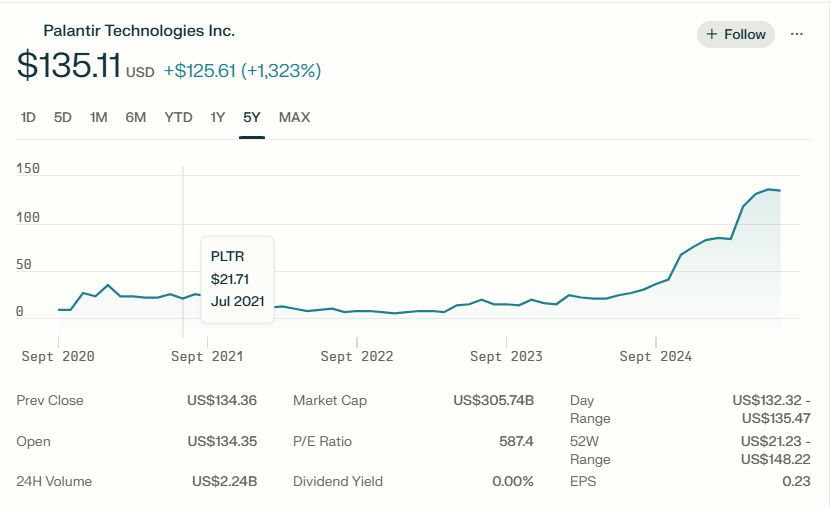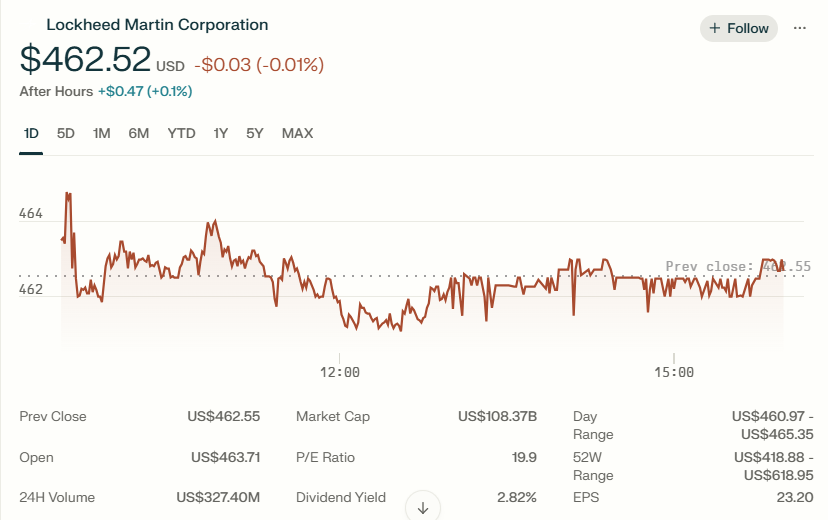Palantir Technologies stands at the forefront of the artificial intelligence and big data analytics movement, recognized for its pivotal role in transforming how governments and enterprises manage and interpret vast amounts of information.
Since its public debut, Palantir has consistently outperformed market expectations, with its market capitalization recently surpassing $320 billion.
As the global AI market is projected to reach $1.8 trillion by 2035, according to Statista, the question of whether Palantir can achieve a $1 trillion valuation is both timely and significant.
Financial Performance and Growth Trajectory
Palantir’s financial results underscore its strong momentum. In the first quarter of 2025, the company reported $884 million in revenue, reflecting a 39% year-over-year increase. Net income reached $205 million, nearly double the previous year’s figure, while free cash flow margins improved to 28%.
According to company filings, Palantir’s U.S. commercial business grew by an impressive 71% year-over-year, and its government segment expanded by 45%. These figures demonstrate Palantir’s ability to capture market share in both public and private sectors—a rare feat among technology companies.
Industry analysts from Gartner and IDC have highlighted Palantir’s robust client retention rates, with over 95% of government clients renewing contracts annually. This loyalty is attributed to Palantir’s proprietary platforms—Gotham, Foundry, and Apollo—which are deeply embedded in mission-critical operations across sectors such as defense, healthcare, and finance.
Market Opportunities and Strategic Expansion
The global demand for AI-powered data analytics is accelerating. Research from McKinsey estimates that AI could add up to $13 trillion to the global economy by 2030. Palantir’s addressable market is expanding as organizations increasingly invest in digital transformation and advanced analytics.
The company’s aggressive push into international markets, particularly in Europe and Asia-Pacific, is expected to drive further growth. In 2024, Palantir secured major contracts with the UK National Health Service and several leading European financial institutions, signaling its growing influence beyond U.S. borders.
Challenges on the Road to $1 Trillion
Despite these strengths, Palantir faces formidable challenges. Its current valuation implies a price-to-sales ratio above 100, which is significantly higher than industry peers such as Microsoft and Alphabet. To justify a $1 trillion valuation by 2035, Palantir must sustain compound annual growth rates of at least 12–14% for the next decade, while also expanding margins and maintaining its technological edge.
Competitive pressure is intensifying, with tech giants and startups alike investing heavily in AI and analytics. Regulatory scrutiny, particularly around data privacy and government contracts, could also pose headwinds. According to a 2025 Deloitte survey, 68% of enterprise leaders cite data security as their top concern when adopting AI solutions.
The Verdict: Can Palantir Reach $1 Trillion?
Palantir’s path to a $1 trillion valuation is ambitious but not impossible. The company’s track record, technological leadership, and expanding global footprint position it as a key player in the AI-driven future. However, sustained innovation, flawless execution, and careful navigation of regulatory and competitive risks will be essential.
As the world’s reliance on data and AI deepens, Palantir’s journey will remain one of the most closely watched narratives in the technology sector. The next decade will reveal whether Palantir can truly join the exclusive ranks of trillion-dollar companies.




